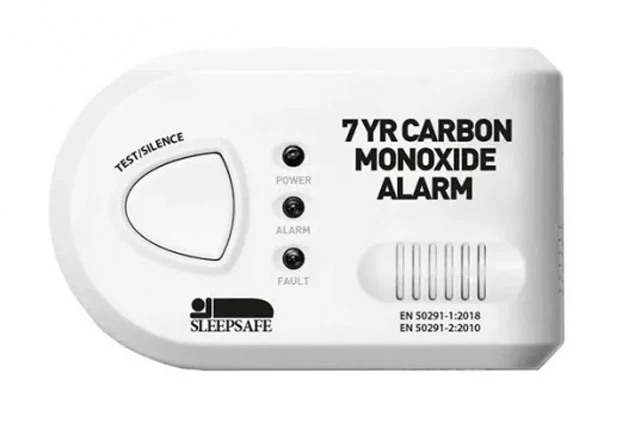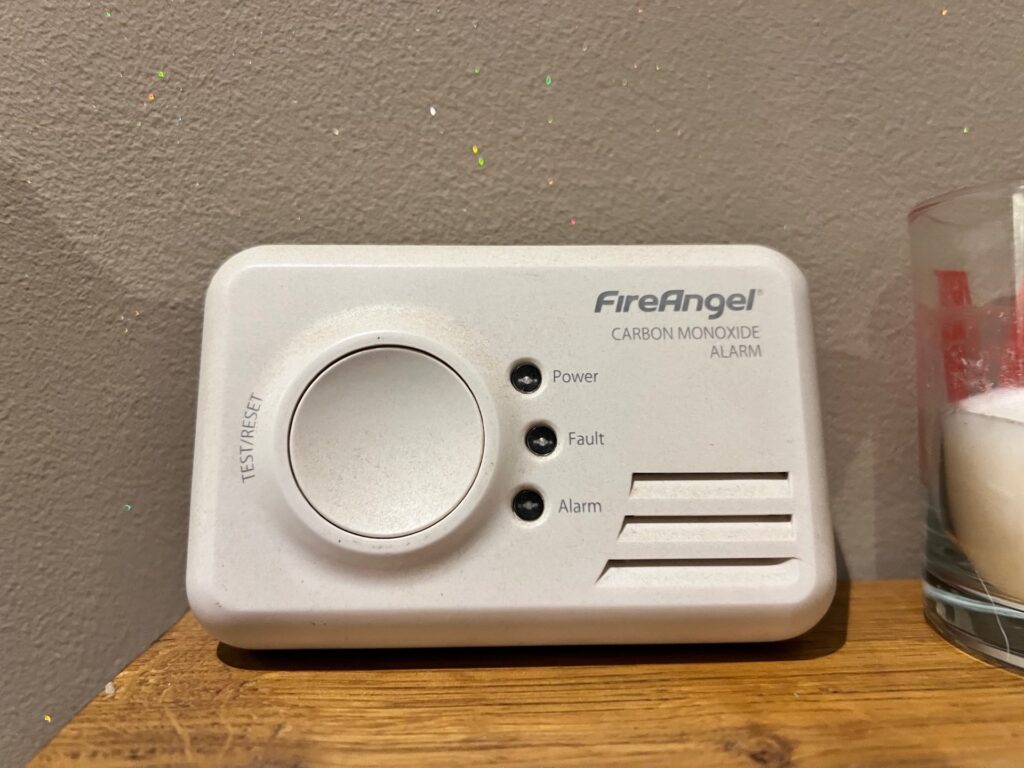
Carbon Monoxide Alarms Fitted
By restricting the exhaust, the products of combustion (carbon monoxide) can escape from the stove through the air inlet valves and into the room.
Carbon monoxide is a colourless, odourless gas that can have life changing consequences if left undetected. Carbon monoxide is caused by the incomplete combustion of fuel.
If the property is tenanted, then by law the property must have one fitted in the same room, even if the appliance is not being used. (October 2015 Law)
The regulations do not stipulate the type of alarms (such as mains powered (‘hard wired’) or battery powered) that should be installed. Landlords should make an informed decision and choose the type of carbon monoxide alarms based on the needs of their building and their tenants, and that those alarms are compliant with British Standards BS 50291. Where battery powered alarms are selected, alarms with ‘sealed for life’ batteries rather than alarms with replaceable batteries are the better option.
Carbon monoxide gas is colourless and does not smell, so you cannot tell if it is around you.Symptoms of carbon monoxide poisoning include:
- headache
- dizziness
- feeling sick or being sick
- feeling weak
- confusion
- chest and muscle pain
- shortness of breath
The symptoms may come and go. They may get worse when you spend time in an affected room or building and get better when you leave or go outside.
Common household appliances used for heating and cooking can produce carbon monoxide if they are not installed properly, are faulty, or are poorly maintained.
Appliances that can cause carbon monoxide include:
- gas boilers
- gas cookers and clay ovens
- gas or paraffin heaters
- wood, gas and coal fires
- portable generators
Using barbeques or camping stoves inside, and turning on vehicle or lawn mower engines in your garage, can also cause a build-up of carbon monoxide.
What to do if you think you have carbon monoxide poisoning
If you think you might have carbon monoxide poisoning:
stop using appliances you think might be making carbon monoxide (such as a boiler, cooker or heater) if you can
- open any windows and doors to let fresh air in
- go outside
Get medical advice as soon as possible – do not go back into the affected building until you have got advice.


